Grains: They're not just for eating
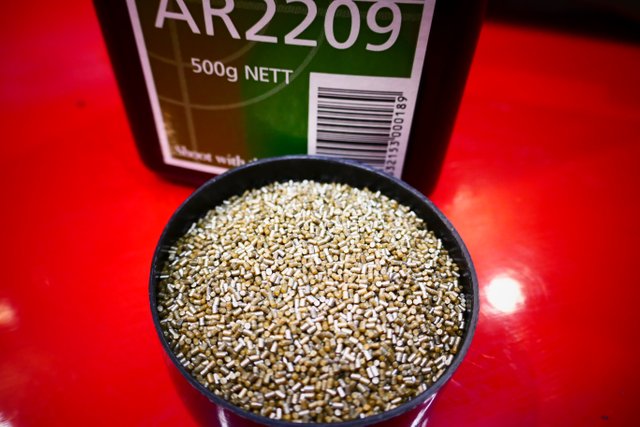
Grains. They don't tend to bring up inspiring images in ones' mind. They are just grains right? We grind them up and make bread and pasta and of course one of the most popular foods in the world is rice; Also a grain. Most people thing about wheat or rice when they hear the word, but talk grains to some people and it means a whole different thing. You see a grain doesn't just refer to foods; It's actually a measurement used in various applications.
For example
1 grain = 0.0647989 of a gram
1 grain = 0.00228571 of an ounce
I think you get the idea, it's a pretty small measurement.
I deal in grains all the time. As a shooter who reloads (makes) my own ammunition I have to measure precise amounts of gun powder and it's measured in grain-weight. The image below right shows a 1 grain measure of AR2209 gun powder. (About 33 granules or so).
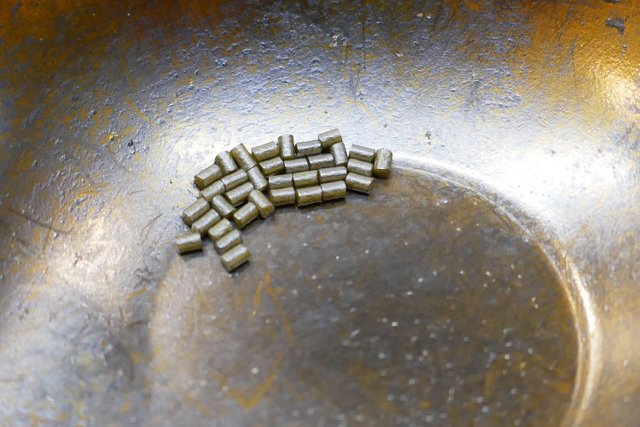
As a long-range competition shooter precision is critical. I'll not get too technical but essentially the more inaccurate the amount of powder (the charge) the more random the bullet becomes. I have a muzzle velocity (MV) of 2845 feet per second (fps) when a bullet exits the muzzle of the rifle and too great a deviation to that speed creates different results down range. I seek a standard deviation (SD) of under 10fps. Anything over that and over long distances the inaccuracy could cause a target miss. For instance a bullet with an MV of 2825fps may fall short meaning a lower point of impact (POI) on the target, or worse, a miss. A bullet with a lower speed (MV) will also be more affected by wind and so may be pushed around affecting windage (left and right accuracy). My ideal MV is 2845fps and 20fps, as per the example above, makes a difference.
Hopefully that made sense.
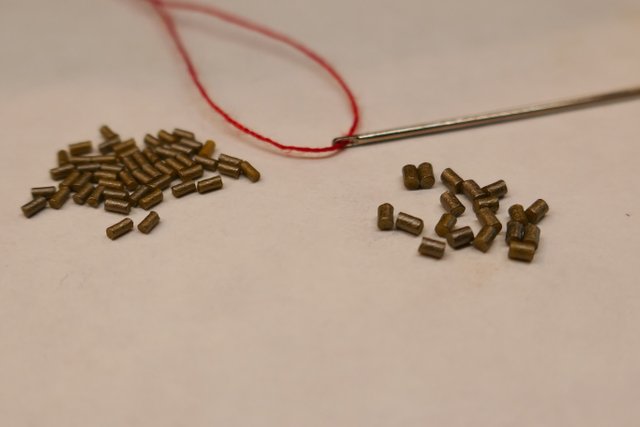
Gun powder. Well it's not really powder at all, not when it goes into a modern day piece of ammunition anyway. It's more like small granules. You will see by the image to the right just how small they are. I photographed two different sorts here. AR2206H on the left and AR2209 on the right. Both are for different purposes. I've also used a threaded needle for perspective. You'll note the left granules are smaller than the right. The size (and shape) of each type of powder affects its burn-rate and therefore the muzzle velocity. Different calibers use different powders. I don't want to get into it here as it's complicated. Due to the different size of the actual granules a grain-measurement of one powder to the next means a different number of granules.
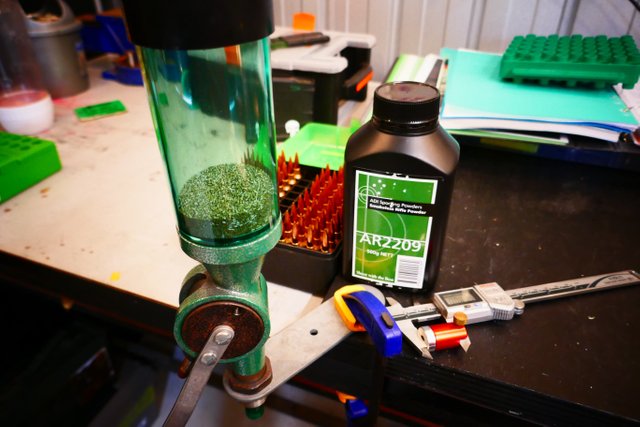
In the making of my competition rounds I use the AR2209 powder. Through extensive load development I have determined the perfect amount of powder for the twist rate of my rifle, the projectile weight (also measured in grains) and the barrel harmonics (vibrations) of my rifle. I actually found two nodes, one at 37 grains and one at 43.4 grains which is the one I went for due to the higher muzzle velocity it produced. It's a complicated process and one too lengthy to explain here. So, each and every time I make competition ammunition I load 43.4 grains of AR2209 which produces an MV of 2845 and if I accurately measure them (which I do) a SD of under 10fps.
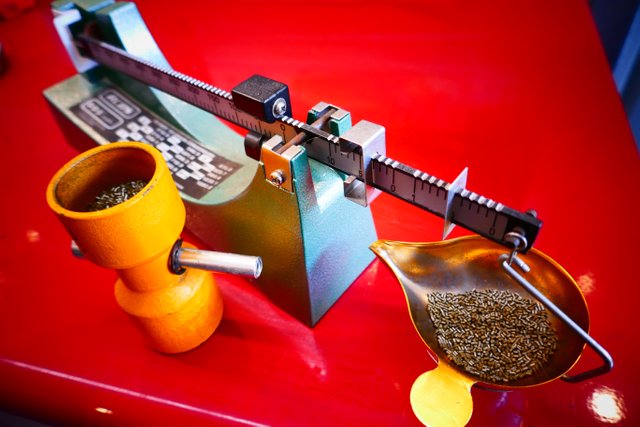
I use a powder thrower to deliver a charge of powder. (It's pictured above right.) It's a highly adjustable device but not completely accurate. From there the charge goes onto my beam scales which are pre-set with the 43.4gr measurement. If the powder charge is over weight I use tweezers to remove some (granule by granule) and if under I use the trickler to trickle a little more powder. It's not unusual to for me to use tweezers to pick up one single granule and drop in in to bring the weight up. I have to be that accurate. It's a long process. To the right you can see the yellow trickler which is a device that holds gun powder with a threaded tube running through the middle. It picks up gun powder and as the tube is twisted it slowly delivers it out the end of the tube one granule at a time. You can also see the beam scales. From here it's dropped into the brass case and using the seating die I seat the bullet into the case creating a piece of ammunition.
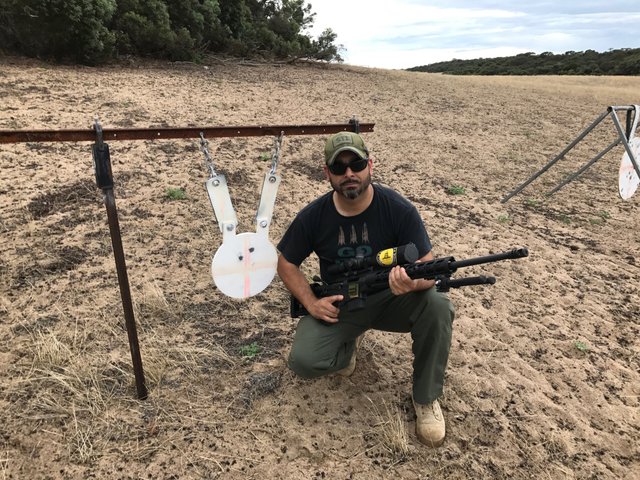
Many factors go into making accurate ammunition: Case preparation, primer choice, neck tension, bullet seating depth, neck concentricity, powder choice, load development and precision-loading to name a few. If that's done correctly using quality equipment the round should be accurate and ready to send. Of course, being able to shooting accurately, knowing all the elements that come together for a long range rifle shot, is also critical. But when it all comes together it's a rewarding thing. So much work goes into it and to get that end result makes it worth while. Especially if there's a competition win on the line. The image to the right was taken on a practice day earlier this year. The two shots you see were taken by me from 1321 meters away. (1.32 kilometers).
I hope this made sense to those that read all the way to the bottom. As a responsible shooter in Australia I work hard to promote my sport as a safe and fun activity. These posts are designed to give people who maybe have not been exposed to the sport (or firearms) before an idea of what is involved.
Design and create your ideal life, don’t live it by default
@galenkp
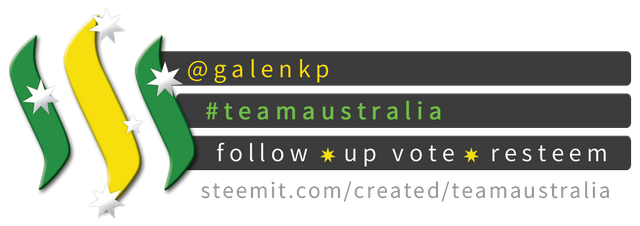
So I had a vague idea that making ammo was an exercise in precision but damn O_O
Yeah, there’s a lot to it for sure. I’ve still not mastered it but after two years of making my own ammo I'm pretty good at it. The rounds are accurate at least. :)
this is really interesting. I had a broad understanding of how this all worked, but i had never actually seen the physical grains.
Great to see something different posted on here.
Thanks mate, I try to debunk some of the mystery around guns with these posts and demonstrate that gun owners are normal people engaging in a hobby.
This post received a 20% vote by @mrsquiggle courtesy of @thinknzombie from the Minnow Support Project ( @minnowsupport ). Join us in Discord.
Upvoting this comment will help support @minnowsupport.